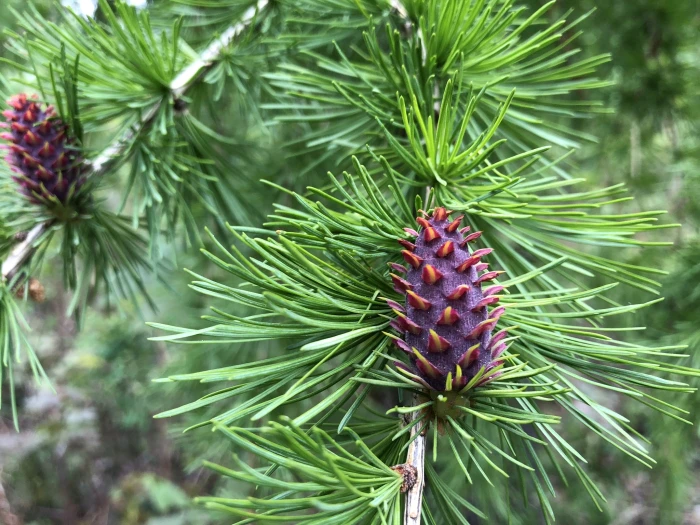European Larch
(Larix decidua)
European Larch (Larix decidua)
/
/

Jason Grant
CC BY 4.0
Image By:
Jason Grant
Recorded By:
Copyright:
CC BY 4.0
Copyright Notice:
Photo by: Jason Grant | License Type: CC BY 4.0 | License URL: http://creativecommons.org/licenses/by/4.0/ | Rights Holder: Jason Grant | Publisher: iNaturalist | Date Created: 2018-05-04T14:02:19-07:00 |










































































Estimated Native Range
Climate Requirements
| • Precipitation | 6" - 132" |
| • High Temp. | 39°F - 99°F |
| • Low Temp. | -14°F - 42°F |
Summary
Larix decidua, commonly known as European Larch, is a deciduous conifer native to mountainous regions and alpine meadows of Central Europe and parts of Eastern Europe, where it contributes to the biodiversity of high-altitude forests. It can grow to a height of 25–45 meters with a trunk up to 1 meter in diameter. The crown of the European Larch is conical in young trees but becomes broader with age. Its branches are level to upswept, with side branches that are often pendulous. The shoots are dimorphic, with long shoots that can be 10–50 cm long and short shoots that are only 1–2 mm long. The cones are initially reddish, turning brown and then grey-black as they age, often remaining on the tree for years. European Larch is known for its longevity, with a typical lifespan of around 200 years, though some trees can live close to 1000 years.
The European Larch is valued for its fast growth and adaptability to cold climates, making it suitable for northern gardens. It is often used in reforestation projects and as an ornamental tree in large spaces due to its size and unique deciduous nature among conifers. The bright green needles turn a striking golden yellow before they drop in the fall, adding seasonal interest. In cultivation, it requires full sun and well-drained soils, avoiding waterlogged conditions. It is not tolerant of shade and prefers cooler climates.CC BY-SA 4.0
The European Larch is valued for its fast growth and adaptability to cold climates, making it suitable for northern gardens. It is often used in reforestation projects and as an ornamental tree in large spaces due to its size and unique deciduous nature among conifers. The bright green needles turn a striking golden yellow before they drop in the fall, adding seasonal interest. In cultivation, it requires full sun and well-drained soils, avoiding waterlogged conditions. It is not tolerant of shade and prefers cooler climates.CC BY-SA 4.0
Plant Description
- Plant Type: Tree
- Height: 60-100 feet
- Width: 20-30 feet
- Growth Rate: Moderate
- Flower Color: N/A
- Flowering Season: Non-Flowering
- Leaf Retention: Deciduous
Growth Requirements
- Sun: Full Sun
- Water: Medium
- Drainage: Fast, Medium
Common Uses
Bank Stabilization, Bird Garden, Border Plant, Deer Resistant, Low Maintenance, Rock Garden, Salt Tolerant
Natural Habitat
Mountainous regions and alpine meadows of Central Europe and parts of Eastern Europe, contributing to high-altitude forest biodiversity
Other Names
Common Names: Common Larch, Modrín Evropský, Modrín Opadavý, Europæisk Lærk, Europäische Lärche, Gemeine Lärche, Alerce, Alerce Común, Alerce Europeo, Mélèze D’Europe
Scientific Names: Larix decidua, Larix decidua var. pendula, Larix europaea var. pendulina, Abies larix, Abies larix var. pendula, Larix decidua f. pendula, Larix decidua var. pendulina, Larix sibirica subsp. polonica, Peuce larix
GBIF Accepted Name: Larix decidua Mill.